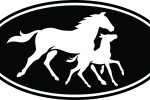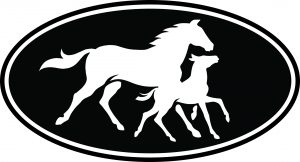As most ROA members have seen, the Horsemen’s Tariff has already received support from many prominent owners, trainers, breeders and jockeys. We would now like to see this enthusiasm spreading out to the grass roots of the industry and we also need to persuade as many racecourses as possible to adhere to the minimum prize-money levels set by the tariff.
The tariff replaces the BHA’s standard minimum prize-money levels which have now been discontinued below the level of Class 2, a move brought about by the paucity of the anticipated levy funding of prize-money in the current year. Minimum values were traditionally based on an aggregate sum drawn from a combination of the levy and owners’ contributions to prize-money. But, as levy funding has decreased and racecourse media rights income increased, there has been a marked shift in what the racecourses have to spend on prize-money and what they choose to spend.
This, therefore, is the rationale behind the tariff – to create a meritocratic system to help reverse the decline in prize-money by giving owners and trainers guidance as to the prize-money they should be running their horses for in the context of all racing’s income streams.
Of course, it is important to the whole industry that racecourses run viable businesses, but we can no longer tolerate this being achieved simply by courses driving down prize-money levels to such an extent that despondent owners throw in the towel and trainers and breeders go out of business. Prize-money must be regarded as a racecourse cost, like any other cost, rather than a balancing factor that is adjusted according to the racecourses’ financial needs.
Responding to the tariff, the RCA have pointed to the low profitability of many racecourses, but the horsemen cannot be expected to either increase their losses or deflate their earnings further to keep racecourses in business.
Realistically, racecourses will support the tariff only on the basis of what’s in it for them. If they believe this support will translate into their having a stronger competitive position, they will embrace it. Competition between racecourses should be a key driver to higher prize-money and improved facilities, and it is only now that we have established a meaningful catalyst to the creation of that competition.
It is to be expected that, initially, some racecourses will choose not to fix their prize-money levels for every race in line with the tariff, but most groups and independents will understand the dangers of not attracting runners from top owners and yards, even for low-profile fixtures.
However, the Horsemen’s Group has always been alive to the risk of the tariff distorting the programme as racecourses choose to put on lower class races to match the requirements of the tariff – the so-called process of ‘dumbing down’.
To an extent, this will take place, but most of the better racecourses will understand that putting on a consistently inferior product will harm their reputation. For the horsemen, the extent of the problem can be measured only with the experience of what the tariff will bring after it has been in operation for several months.
When you consider the levy’s contribution to prize-money is predicted to decline from £51 million in 2010 to £34m in 2011, unless the government determination brings some respite, and when you also consider that racecourses’ annual media rights income from 2009 has increased by around £20m, it was inevitable that something had to give to create a more equitable way of spreading racing’s overall income.
This has come in the shape of the tariff – a simple and fair method for the Horsemen’s Group to recommend prize-money levels, both to its own members and to racecourses. A system based not on coercion but persuasion. And for the sake of the British racing industry, we must all hope it works.



